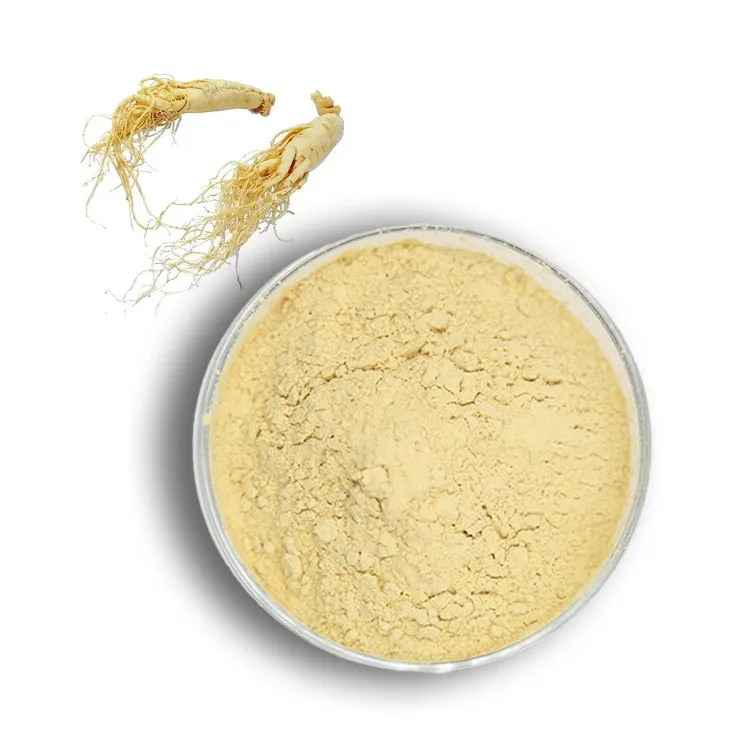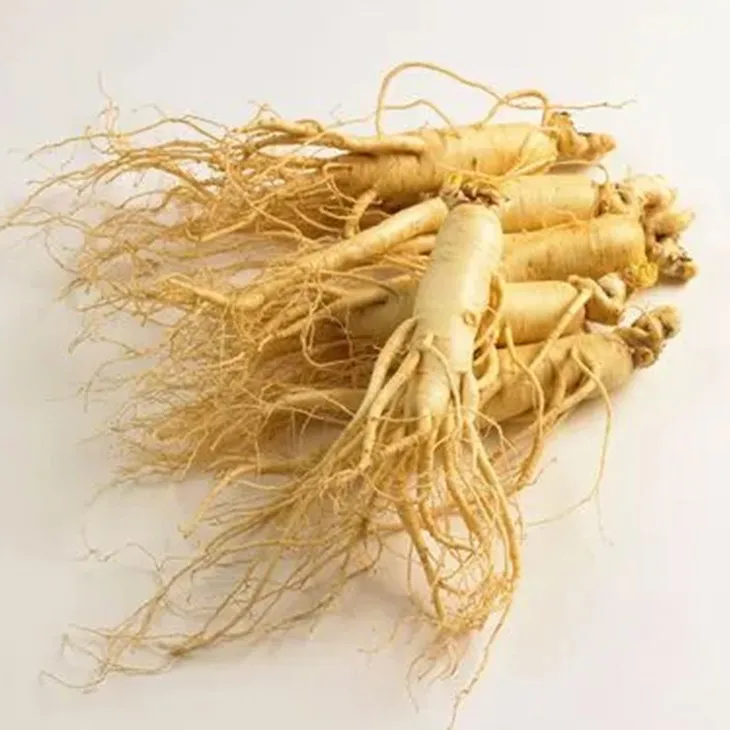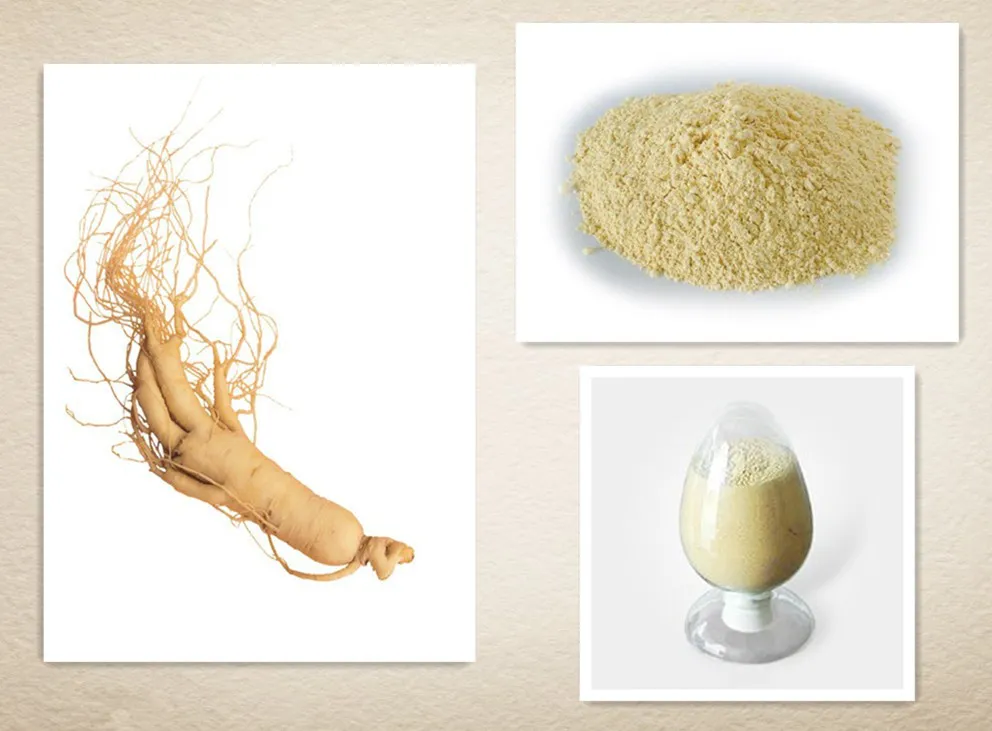- 0086-571-85302990
- sales@greenskybio.com
Title: The Best Types of Ginseng Root Extract. Type: A Guide to Selecting the Best Ginseng Root Extract.
2024-11-14

Introduction
Ginseng has been a highly regarded herb in traditional medicine for centuries, known for its potential health - enhancing properties. Ginseng Root Extract is a concentrated form of this powerful herb, making it more convenient for consumption. However, with various types of Ginseng Root Extract available in the market, it can be quite challenging to determine which one is the best. This guide aims to explore different aspects of Ginseng Root Extract to help you make an informed decision.

1. Understanding Ginseng
1.1 Different Species of Ginseng
There are several species of ginseng, and the two most well - known are Panax ginseng (Asian ginseng) and Panax quinquefolius (American ginseng). Asian ginseng is often associated with more warming properties in traditional medicine, while American ginseng is considered to be more cooling. Eleutherococcus senticosus, also known as Siberian ginseng, is another type that is sometimes used as a substitute, although it is not a true ginseng. Each species may have different chemical compositions and potential health effects.
1.2 Origins and Quality
- The origin of ginseng plays a crucial role in its quality. For Asian ginseng, regions like Korea and parts of China are known for high - quality production. Korean ginseng, in particular, has a long - standing reputation for its potency. The soil, climate, and cultivation methods in these areas can influence the growth and the active compounds in the ginseng root.
- American ginseng is native to North America, with regions such as Wisconsin and Ontario producing significant amounts. Ginseng grown in its native environment may have a more natural and pure profile of active ingredients.

2. Processing Techniques
2.1 Drying Methods
- One of the most common processing techniques for ginseng root is drying. Air - drying is a traditional method that helps to preserve the natural compounds in the root. Slow - dried ginseng is often considered to be of higher quality as it allows the root to retain more of its beneficial properties.
- Some modern drying techniques use controlled - temperature environments to speed up the process. However, if not done properly, these methods may lead to a loss of some volatile and heat - sensitive compounds in the ginseng root.
2.2 Extraction Methods
- There are various extraction methods used to obtain ginseng root extract. Solvent extraction is a common approach, where solvents like alcohol or water are used to extract the active compounds from the root. Alcohol - based extracts may be more effective at extracting certain lipophilic (fat - soluble) compounds, while water - based extracts are better for hydrophilic (water - soluble) compounds.
- Another method is supercritical fluid extraction, which uses a supercritical fluid (usually carbon dioxide) as the solvent. This method has the advantage of being more environmentally friendly and can often produce a purer extract with a higher concentration of active ingredients.

3. Active Compounds and Potential Health Impacts
3.1 Ginsenosides
Ginsenosides are the most well - known active compounds in ginseng. They are believed to be responsible for many of the herb's health - promoting effects. Different types of ginseng root extract may have varying levels and types of ginsenosides. For example, Panax ginseng typically contains different ginsenosides compared to Panax quinquefolius. These compounds have been studied for their potential to boost the immune system, improve cognitive function, and enhance energy levels.
3.2 Other Compounds
- In addition to ginsenosides, ginseng root also contains other bioactive compounds such as polysaccharides. These polysaccharides may have immunomodulatory effects, helping to regulate the immune system. They are also thought to have antioxidant properties, which can protect the body against oxidative stress.
- Flavonoids are another group of compounds found in ginseng. They contribute to the overall antioxidant activity of the herb and may also have anti - inflammatory effects.

4. Selecting the Best Ginseng Root Extract
4.1 Based on Health Needs
- If you are looking to boost your immune system, an extract rich in ginsenosides and polysaccharides may be a good choice. Look for products that are sourced from high - quality ginseng roots and have been processed in a way that preserves these active compounds.
- For those seeking to improve cognitive function, an extract with a specific profile of ginsenosides, such as those found in Panax ginseng, may be more beneficial. Some studies have shown that certain ginsenosides can enhance memory and concentration.
- If you have issues with energy levels, an extract that has been shown to improve stamina and reduce fatigue could be ideal. Again, this may depend on the species of ginseng and its processing method.
4.2 Considerations for Quality
- Check for certifications when purchasing ginseng root extract. Certifications such as organic or GMP (Good Manufacturing Practice) can indicate that the product has been produced under strict quality control standards. Organic certification ensures that the ginseng has been grown without the use of harmful pesticides and fertilizers.
- Look for products that disclose their extraction and processing methods. Transparency in these areas can give you an idea of the quality of the extract. For example, if a product uses a high - quality extraction method like supercritical fluid extraction, it may be more likely to contain a pure and potent extract.
- Consider the brand reputation. Well - established brands with a history of producing high - quality herbal products are more likely to offer reliable ginseng root extracts. Reading customer reviews can also provide valuable insights into the effectiveness and quality of a particular product.

5. Precautions and Side Effects
While ginseng root extract is generally considered safe for most people when used appropriately, there are some precautions to keep in mind. Ginseng can interact with certain medications, such as blood - thinning drugs or medications for diabetes. It is important to consult a healthcare provider before starting to use ginseng root extract if you are taking any medications. Additionally, high doses of ginseng may cause side effects such as insomnia, nervousness, or digestive issues in some individuals. It is recommended to start with a low dose and gradually increase if needed, while closely monitoring for any adverse reactions.
6. Conclusion
Selecting the best ginseng root extract requires careful consideration of various factors, including the species of ginseng, its origin, processing techniques, and potential health impacts. By understanding these aspects and your own health needs, you can make a more informed choice when it comes to choosing a ginseng root extract product. Remember to also be aware of precautions and potential side effects to ensure safe and effective use of this powerful herbal extract.
FAQ:
What are the main types of ginseng root extract?
There are mainly American Ginseng Root Extract, Asian ginseng root extract (such as Korean ginseng and Chinese ginseng), and Siberian ginseng root extract. American ginseng is often considered more cooling in nature, while Asian ginseng is relatively warming. Siberian ginseng is also popular, though it is not a true ginseng but has similar properties.
How does the origin of ginseng affect the quality of its root extract?
The origin of ginseng can significantly impact the quality of its root extract. For example, ginseng grown in its native regions with suitable soil, climate, and altitude conditions is likely to be of higher quality. Korean ginseng from regions like Geumsan is renowned for its potency. American ginseng from regions like Wisconsin in the US also has a good reputation. The unique environmental factors in these areas contribute to the formation of beneficial compounds in the ginseng root, which are then carried over to the extract.
What processing techniques are used for ginseng root extract?
Common processing techniques for ginseng root extract include drying, steaming, and fermentation. Drying is a basic method to preserve the ginseng root before extraction. Steaming can change the chemical composition of ginseng, making some active ingredients more bioavailable. Fermentation is a relatively new technique that can enhance the antioxidant and other beneficial properties of ginseng root extract through the action of microorganisms.
What are the potential health impacts of different ginseng root extracts?
Asian ginseng root extract is often associated with enhancing energy, improving cognitive function, and boosting the immune system. American Ginseng Root Extract may help with stress reduction and blood sugar regulation. Siberian ginseng root extract is known for its adaptogenic properties, which can help the body adapt to various stressors, such as physical and mental stress.
How can one ensure the purity of ginseng root extract?
To ensure the purity of ginseng root extract, look for products that are tested by third - party laboratories. Reputable brands usually provide certificates of analysis. Check for the presence of fillers or additives. A pure ginseng root extract should contain mainly the active compounds from the ginseng root without unnecessary additives. Also, make sure the extraction process is clearly described and follows good manufacturing practices.
Related literature
- The Medicinal Properties of Ginseng: A Comprehensive Review"
- "Ginseng Root Extract: From Traditional Use to Modern Research"
- "Evaluating the Quality of Ginseng Root Extract: Standards and Practices"
- ▶ Hesperidin
- ▶ Citrus Bioflavonoids
- ▶ Plant Extract
- ▶ lycopene
- ▶ Diosmin
- ▶ Grape seed extract
- ▶ Sea buckthorn Juice Powder
- ▶ Fruit Juice Powder
- ▶ Hops Extract
- ▶ Artichoke Extract
- ▶ Mushroom extract
- ▶ Astaxanthin
- ▶ Green Tea Extract
- ▶ Curcumin
- ▶ Horse Chestnut Extract
- ▶ Other Product
- ▶ Boswellia Serrata Extract
- ▶ Resveratrol
- ▶ Marigold Extract
- ▶ Grape Leaf Extract
- ▶ New Product
- ▶ Aminolevulinic acid
- ▶ Cranberry Extract
- ▶ Red Yeast Rice
- ▶ Red Wine Extract
-
Hawthorn Extract
2024-11-14
-
Kupilu Extract
2024-11-14
-
Chaste Berry Extract
2024-11-14
-
Marigold Extract
2024-11-14
-
Nettle Root Extract
2024-11-14
-
Hops Extract
2024-11-14
-
Golden Seal Extract
2024-11-14
-
Cactus Extract
2024-11-14
-
Andrographis Paniculata Extract Powder
2024-11-14
-
Cat Claw Extract
2024-11-14





















